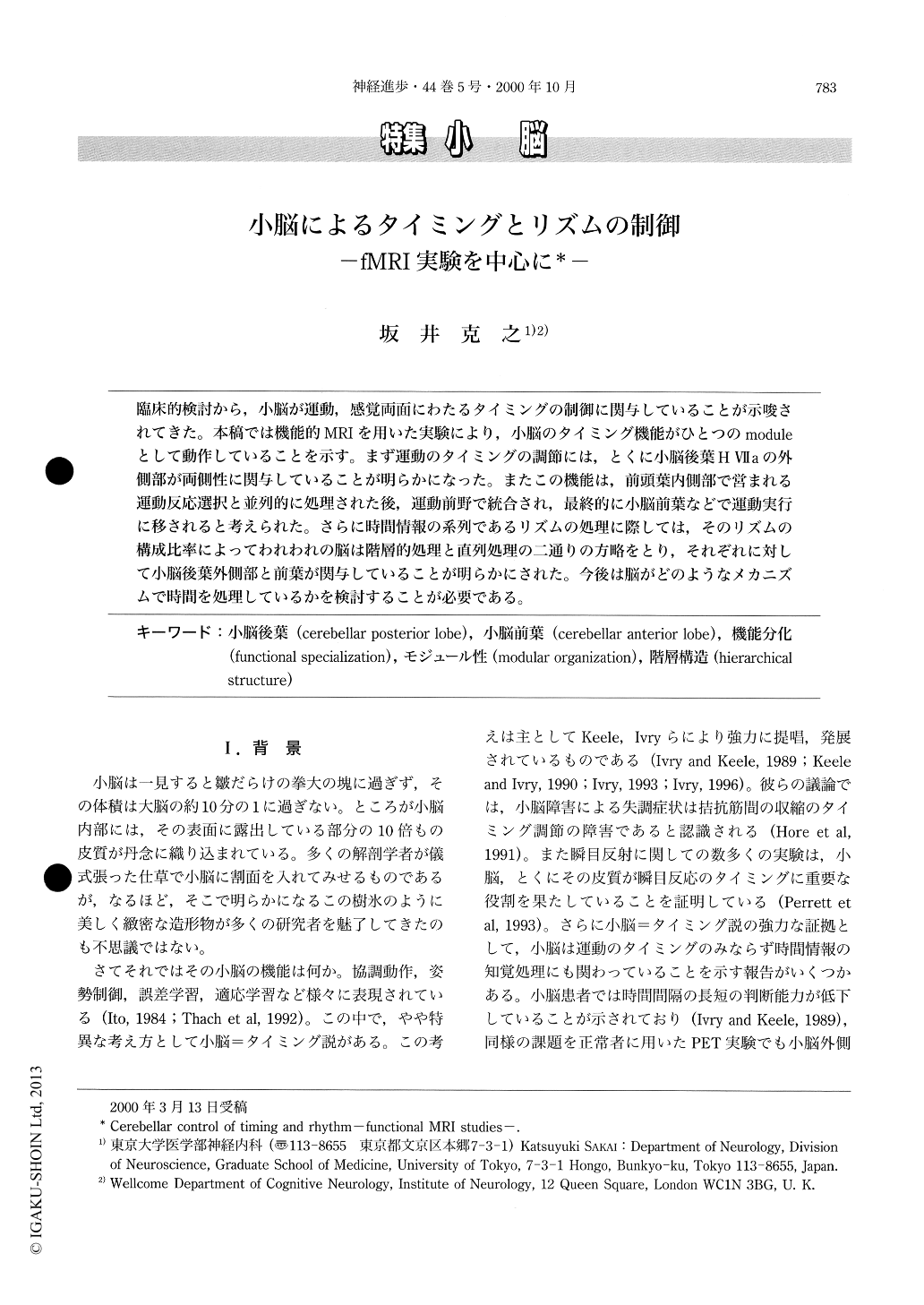Japanese
English
- 有料閲覧
- Abstract 文献概要
- 1ページ目 Look Inside
臨床的検討から,小脳が運動,感覚両面にわたるタイミングの制御に関与していることが示唆されてきた。本稿では機能的MRIを用いた実験により,小脳のタイミング機能がひとつのmoduleとして動作していることを示す。まず運動のタイミングの調節には,とくに小脳後葉H VIIaの外側部が両側性に関与していることが明らかになった。またこの機能は,前頭葉内側部で営まれる運動反応選択と並列的に処理された後,運動前野で統合され,最終的に小脳前葉などで運動実行に移されると考えられた。さらに時間情報の系列であるリズムの処理に際しては,そのリズムの構成比率によってわれわれの脳は階層的処理と直列処理の二通りの方略をとり,それぞれに対して小脳後葉外側部と前葉が関与していることが明らかにされた。今後は脳がどのようなメカニズムで時間を処理しているかを検討することが必要である。
Clinical studies have shown that the cerebellum is involved in both motoric and sensory aspects of timing process. Recent functional MRI studies have demonstrated that the timing process is subserved by a specific module within the cerebellum, the lateral part of the posterior lobe (H VIIa). This process is independent of the motor execution process which is subserved by the anterior lobe of the cerebellum. The process of response selection and that of timing adjustment are carried out in parallel, and then integrated in the premotor cortex to generate a final motor program. In addition, it has been shown that the cerebellum is involved in rhythm processing. Rhythms are processed either hierarchically or serially depending on their interval ratios. The former strategy involves the cerebellar anterior lobe, whereas the latter strategy involves the posterior lobe. The precise mechanism of how our brain processes time information remains open to future studies.

Copyright © 2000, Igaku-Shoin Ltd. All rights reserved.


